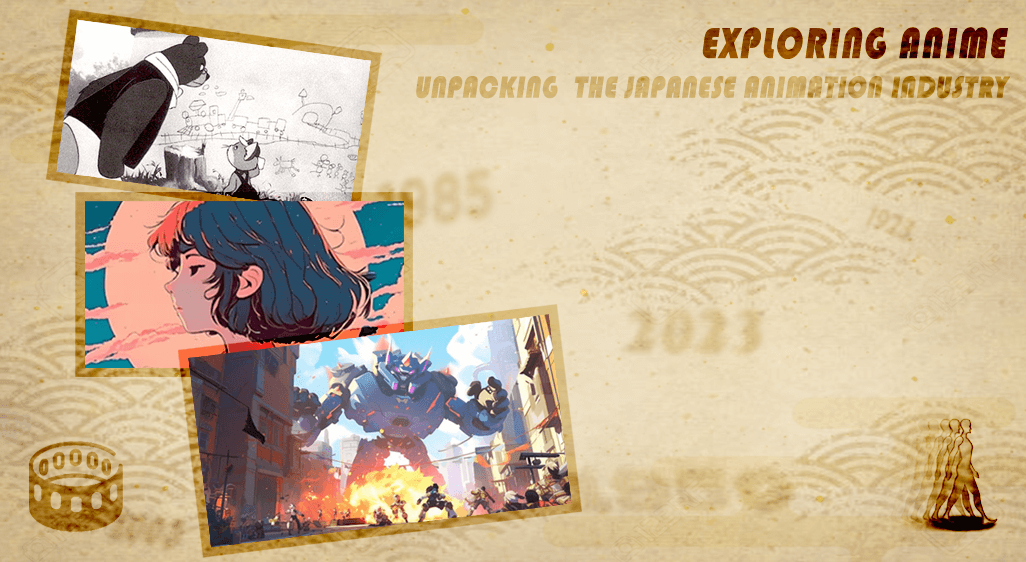When you hear the word “anime,” images of lively people, fascinating settings, and engrossing narratives come to mind. With its rich stories that range from post-apocalyptic science fiction to touching high school dramas, this particular kind of Japanese animation has captivated audiences all over the world for decades. From its modest origins to its imposing global presence today, anime stands as a cultural phenomenon that is always changing and pushing the limits of storytelling and animation methods. This investigation explores the development of the Japanese animation business, its history, methods, genres, cultural impact, and its ever-changing future.
Origins and Evolution
The journey of anime can be traced back to its early origins, where Japanese creators were influenced by Western animation techniques and traditional Japanese art forms. This fusion led to the development of a distinctive style that eventually became recognized as anime.
The tragic Tokyo earthquake of 1923 resulted in the loss of many early animated works, marking a setback for the budding industry. However, by the 1930s, the animation studios managed to harness traditional cel animation techniques, laying the groundwork for what was to come.
The 1950s witnessed the emergence of the first fully-fledged anime studios, propelled by the use of animation for wartime propaganda. One pivotal player was Toei Animation, often referred to as “the Disney of the East,” which co-produced the first full-color anime feature film in 1958. This landmark moment showcased the artistic potential of anime and set the stage for its global recognition.
Anime Techniques: Motion and Atmosphere
Anime’s animation techniques set it apart from Western animation. While Western animation often emphasizes dynamic and exaggerated movements, anime prioritizes deliberate and orderly interactions between characters. This approach, known as “shot on threes,” creates a unique visual style characterized by expressive characters and meticulously detailed backgrounds.
A notable hallmark of anime is its dedication to mises-en-scène—scenery and background. This emphasis on creating immersive atmospheres elevates the viewer’s engagement, enveloping them in the world of the story. Sound and visual effects play a vital role in establishing the desired mood and enhancing storytelling.
Diverse Genres and Target Audiences
The anime landscape is a vast spectrum encompassing various genres, each catering to a specific audience. Ranging from kodomo / kodomuke (for children) to seinen (for young adult men) and josei (for young adult women), anime’s versatility is evident in the breadth of its genres.
This ability to traverse genres is one of anime’s defining characteristics. It offers a buffet of narratives, from intense dystopian sagas to heartwarming slice-of-life tales. This flexibility is a key factor in anime’s universal appeal, resonating with people of all ages and backgrounds.
Anime’s Global Impact
Anime’s journey beyond Japan’s borders is a testament to its cross-cultural allure. While its ascent to international prominence was gradual, the 1980s marked a turning point. During this era, anime experienced significant improvements in visuals and storytelling, leading to the emergence of masterpieces like Hayao Miyazaki’s works from Studio Ghibli. The industry’s global impact was underscored when “Spirited Away” won an Oscar in 2003, cementing anime’s place on the global stage.
The advent of the Internet era turbocharged anime’s global reach. Subtitled episodes accessible online bridged linguistic barriers, creating vibrant online communities and a sense of interconnectedness among fans worldwide. In India, anime’s popularity surged, leading to the formation of fan clubs, conventions, and even commercial ventures centered around anime merchandise.
Cultural Influence and Creativity in India
India’s burgeoning fascination with anime culture is a reflection of the wider trend of globalization. Classics like “Dragon Ball Z” and “Naruto,” along with contemporary hits like “Demon Slayer” and “Attack on Titan,” have found ardent fans in India. The intricate narratives, unique art styles, and themes echoing universal emotions have struck a chord with Indian viewers.
This growing affinity for anime culture in India has spurred the rise of fan clubs, cosplay events, and conventions. These gatherings provide platforms for enthusiasts to celebrate their shared passion, connect with like-minded individuals, and showcase their creative expressions through cosplay and fan art. Additionally, companies in India are capitalizing on this trend by offering anime-themed merchandise, further fueling the cultural exchange between Japan and India.
Anticipating the Future of Anime
The anime industry’s future shines brightly with the promise of innovation and evolution. Technological advancements will likely lead to refined animation techniques, enabling creators to craft even more visually stunning and immersive worlds. Genres will continue to expand, delving into uncharted territories of storytelling and embracing a diversity of themes.
Global collaborations will also flourish, facilitating the exchange of ideas and narratives across cultures. The intermingling of creative minds from different parts of the world will foster a richer and more varied anime landscape, erasing traditional boundaries and pushing artistic boundaries.
In conclusion, anime’s development from its modest beginnings to its current global renown is proof of the value of creativity, storytelling, and cross-cultural interaction. A tapestry of imagination and expression that crosses national boundaries is woven together by the history, methods, genres, and global effects of the Japanese animation industry.
As we explore the expansive realm of anime, we are not merely witnessing animated stories; we are immersing ourselves in a world that unites diverse audiences through shared emotions, experiences, and dreams. Anime’s ability to reflect the human condition and address universal themes is a reminder of the remarkable connectivity that art can inspire.
From the meticulous animation techniques to the intricate narratives that unravel within each frame, anime encapsulates the essence of human creativity and its boundless potential. It is a celebration of culture, a testament to the enduring power of storytelling, and an invitation to partake in a limitless journey of imagination. As we move forward, the legacy of anime will continue to shape the artistic landscape and inspire generations to come, igniting a passion for creativity that transcends cultural and geographical boundaries.












